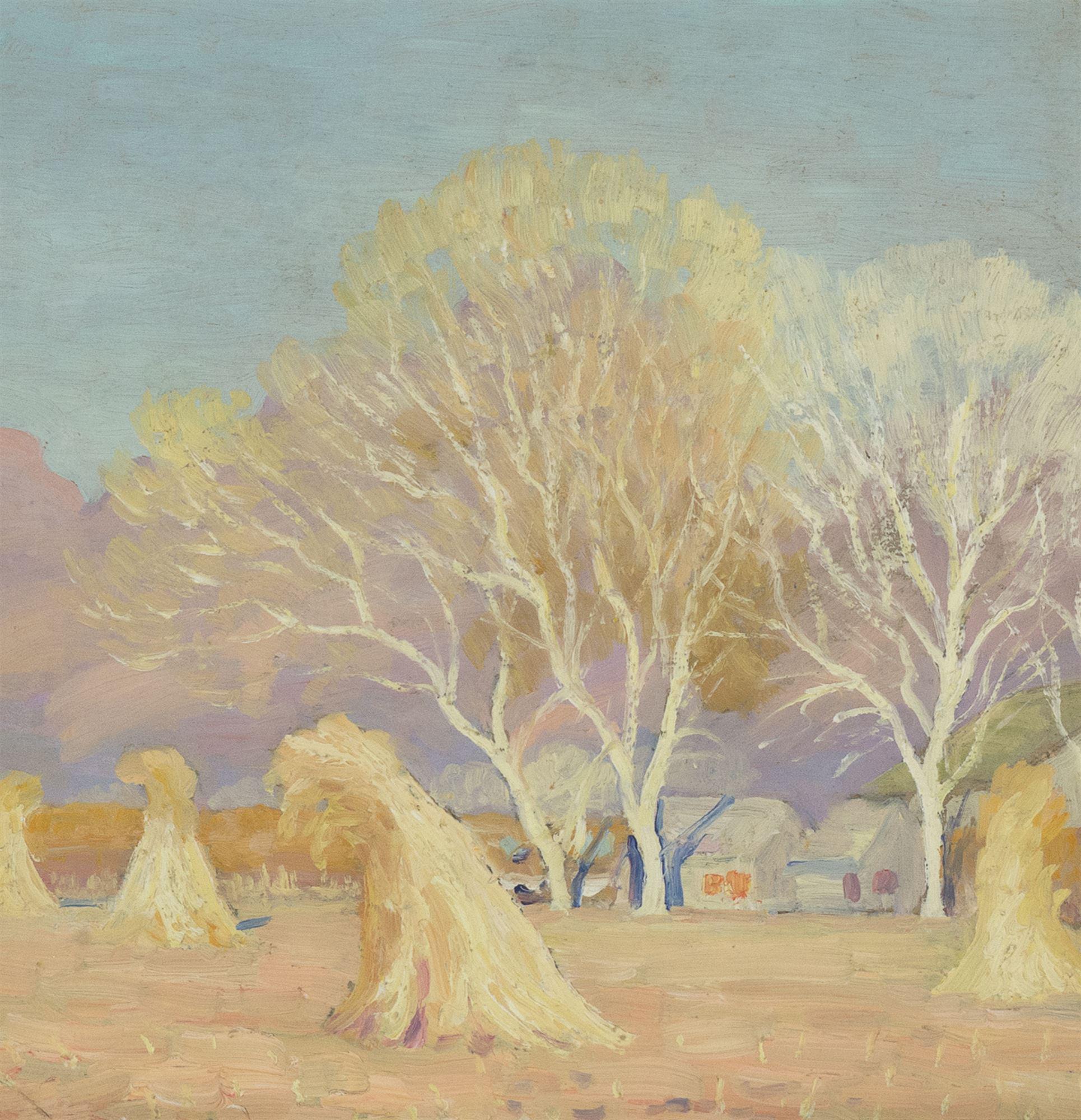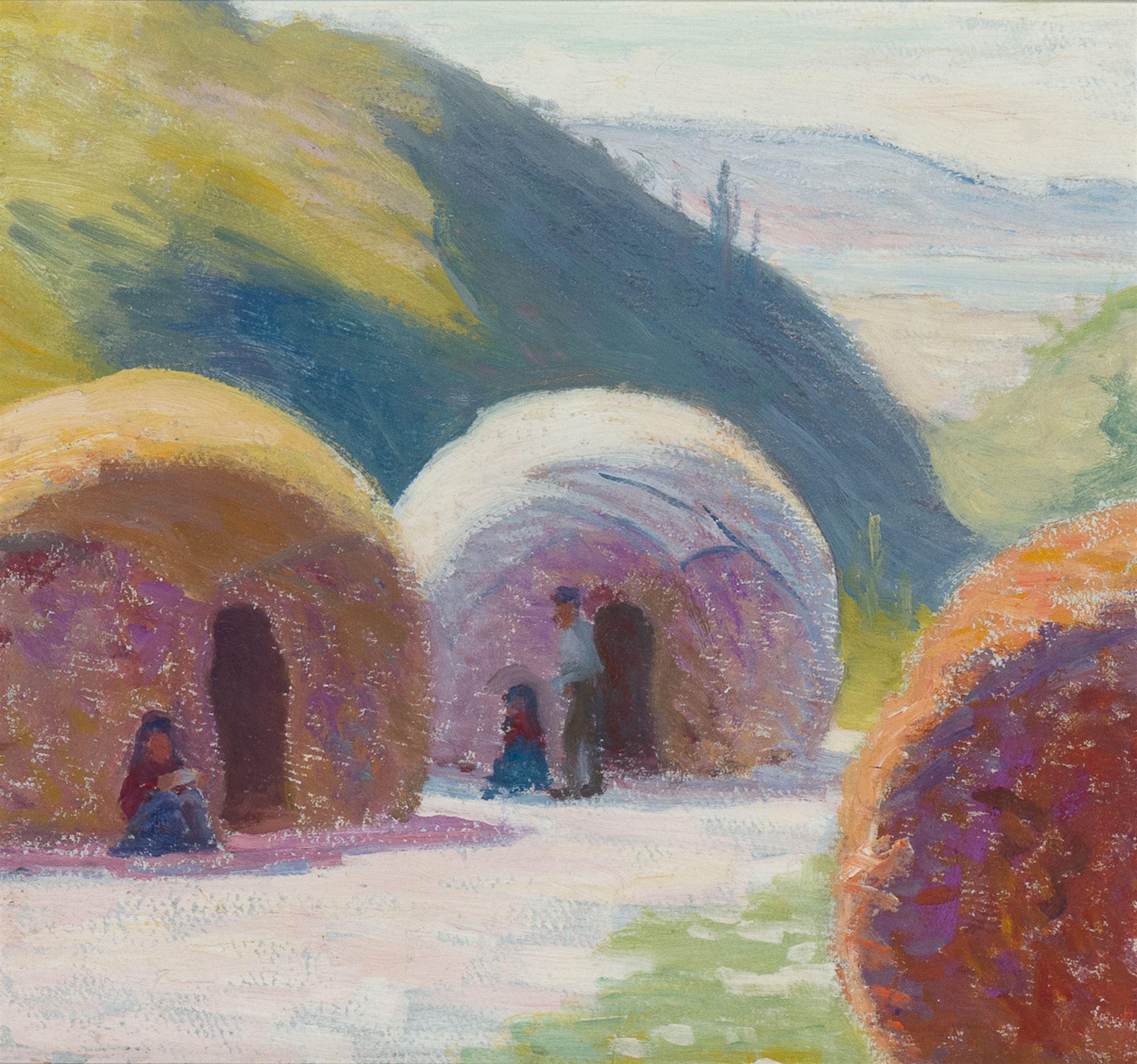For More Information
Evan Feldman
Director
Albert Schmidt was born in Chicago, Illinois in 1885 and began his art training at the Art Institute of Chicago in 1904. He, like many other American art students, traveled to Europe to further his education. In 1910, he began studies at the Academie Julian in Paris. Schmidt expanded his studies with travels throughout Europe to see works by masters and contemporary Europeans.
In 1921 when Albert and his wife and son were on their way to California, they stopped in Santa Fe, fell in love with the area, and decided to stay. Schmidt was struck by the expanse of the northern New Mexico landscape and devoted his entire life to painting those scenes. He used the European academic traditions he learned at the Art Institute of Chicago throughout his career in addition to the more modern techniques: the color patches of the Impressionists, the serpentine lines of Art Nouveau, the blocky masses of the Cubists, and the bright colors of the Expressionists.
His love for the land led to his great interest in light and color effects, design, and tonal analysis. Schmidt was always interested in experimental techniques and had the opportunity to freely experiment since he had no concerns about selling his paintings; his wife earned an income from rental property in Chicago. His main interest was in oils, but by the late 1920s, he developed a love for pastels; the tones were perfect for representing the landscape. He also experimented in watercolor, charcoal and graphite.
Schmidt is not as well known as his contemporaries because he did not actively seek exhibitions for himself, he did not exhibit in commercial galleries or exhibit with other artists. He preferred to paint for personal pleasure. Schmidt was a founding member of the Santa Fe Art Colony, but because he was so quiet and unassuming, he was described as being a silent partner. He found in New Mexico a place where he could feel at peace with himself, a place where human scale was not diminished by buildings, but by mountains and trees. His experiments in composition, color, and medium created a oeuvre of distinct works: still lifes, landscapes, figures, genre scenes and nature studies which run the scale from tender to dynamic.






